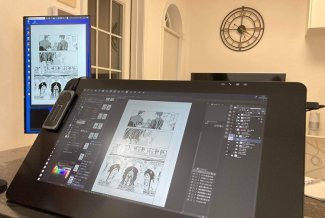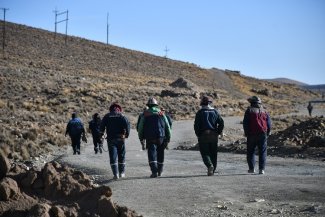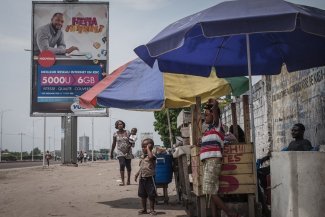
Speeding along the modern motorway connecting the capital Islamabad to Peshawar on the northwest frontier, you’d be forgiven for thinking that Pakistan had begun to put its troubles behind it.
Yet this ‘first world’ highway, with its perfect surface, tidy verges and efficient toll- booths is but a surreal diversion in a tragic and seemingly hopeless journey that has seen Pakistan slip further and further back to the past.
Look out of your car windows and you’ll see serried rows of tall brick chimneys belching thick black smoke across fields of wheat and rich farmland watered by the River Indus and its tributaries. The chimneys are reminiscent of Britain’s Industrial Revolution in the 18th and 19th centuries that spawned the mass exploitation of labour and the birth of the trade union movement.
These are the brick fields of Taxila, an ancient centre of Hindu and Buddhist culture at the crossroads of a land conquered by Darius the Great, Alexander the Great and the British, amongst many others.
Today in Pakistan, millions of working men and women – and children – still toil in unspeakable conditions for less than one US dollar a day.
In some regions of the embattled country, especially in the conflict zones affected by the “War on Terror” and the areas devastated by the great flood of 2010, 70 per cent of the population is living below the poverty level.
And here, if anything, child labour has increased – despite probable falls in child labour around the world.
In the 1990s, the Human Rights Commission of Pakistan estimated that 11 million children were working in the country. Today, with the country’s population topping 180 million, this figure has grown to at least 12 million working children, according to most reliable sources.
Globally, the ILO estimates that the number of child labourers fell by some 30 million between 2000 and 2008. But they calculated that there were still approximately 215 million child labourers at the end of this period, around half of them on the Indian sub-continent.
(Video report by David Browne/Parachute Pictures)
On bonds and bricks
All this is of little consequence to Shezaman Khan, a good-looking man of 35, who works from sun-up to sunset in the brick works owned by Sher Bahadur in Taxila’s Waycantt district.
An advertising logo for a mobile phone company called Easy Paisa – meaning ‘easy money’ – painted on the wall of a nearby building, makes a mockery of Shezaman’s sweat and toil as he churns and prepares a mound of clay-rich mud for brick-making.
Shezaman has never been to school and can’t read and write. He began working in the brickfields almost as soon as he could walk. Now his five children – among them 10-year-old Shaukat Ali – are following in their father’s muddy footsteps.
The family is ‘bonded’, which means they are in deep debt to their boss and thus locked in a vicious cycle of labour exploitation. They make on average 2,000 bricks a day for which they receive a total of 3,500 Pakistani rupees a week, precisely 35 US dollars.
I ask Shezaman how he likes his work.
“How can anyone like this kind of job?” he answers. “But this is my position. I need the work. I’ve taken a cash advance from the owner, so I’m working. This is my fate because I’m a bonded labourer.”
Young Shaukat is working alongside his father, and I ask him if he’d like to go to school. The boy, lost in the metronomic rhythm of his labour, continues to hit and turn the brick mud with his hoe. He looks at me, silent, as if I am a visitor from another world; which in a sense I am.
I ask Shezaman how many hours the family works each week.
“This is not a part-time job,” he says with a wry smile. “If I like, I can come for work in the evening and work until the morning. If I come in the morning, I can work until the night. It all depends on me.”
Child ‘beasts of burden’
Across the brickfield there are many other working children. A few of them are girls, but, in keeping with their traditional Islamic modesty, they turn away when they see my camera.
Among the boys are Bheram, aged nine, Salim, 10, and 11-year-old Humayoun Ali.
The youngsters work as beasts of burden, loading donkeys with dried bricks that are then carried to a large kiln for firing.
Later, as evening approaches, I interview the 45-year-old owner Mr Bahadur, who has run this business for 25 years.
He sells his bricks for six rupees each and makes a profit of around 100,000 rupees (1,000 US dollars) in a ‘good’ month, depending on the weather.
“I have around 100 workers. If there’s no rain they can work all week. If there’s rain they can stop. That’s like a holiday for them,” he says smugly.
“I am not a boss. My labourers are my boss. Our responsibility is to our labourers. We pay their money and look after their needs.”
Despite all the graphic evidence to the contrary, he denies there is child labour in his business.
“Here we only give work to adults,” he insists. However, in direct contradiction, he adds: “Everyone can work. If there is a family of three people working, each can earn 600 rupees per day (six US dollars). He can make more or he can make less. It all depends on the person.
“The people around here have no education. They can work here or take education. They are poor people. They need to work. How can they go to school?
“It’s the responsibility of the father to give his child education. In our country there are many people who have education but no job. But my workers are lucky because they have work. This is their blood and their life.”
Blood, sweat and toil – such is the price of a brick made by a child slave in Taxila, Pakistan.








